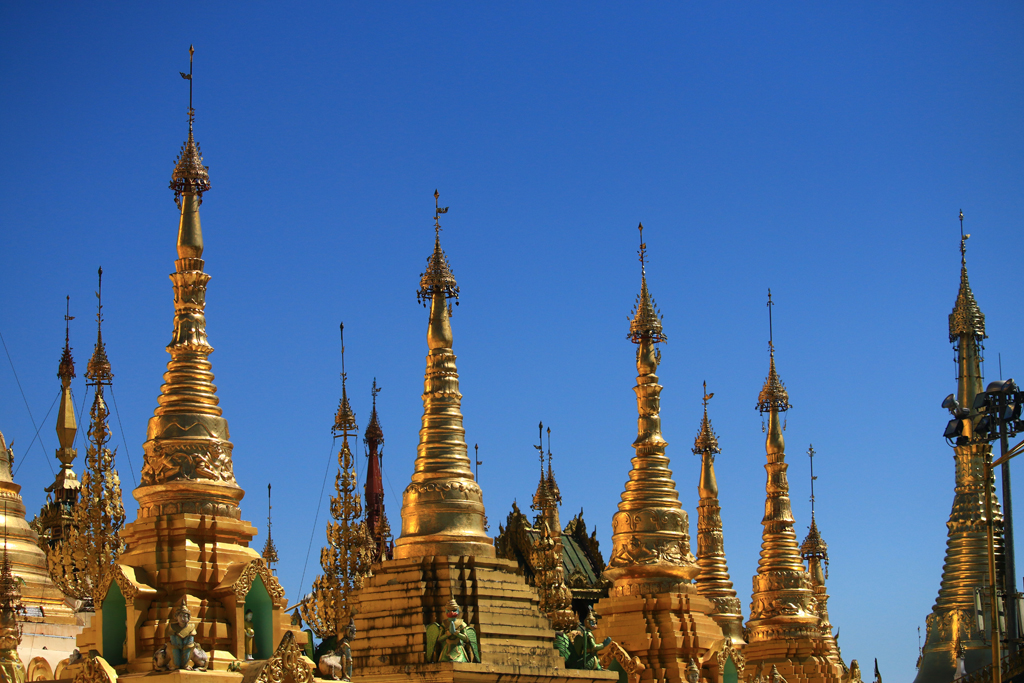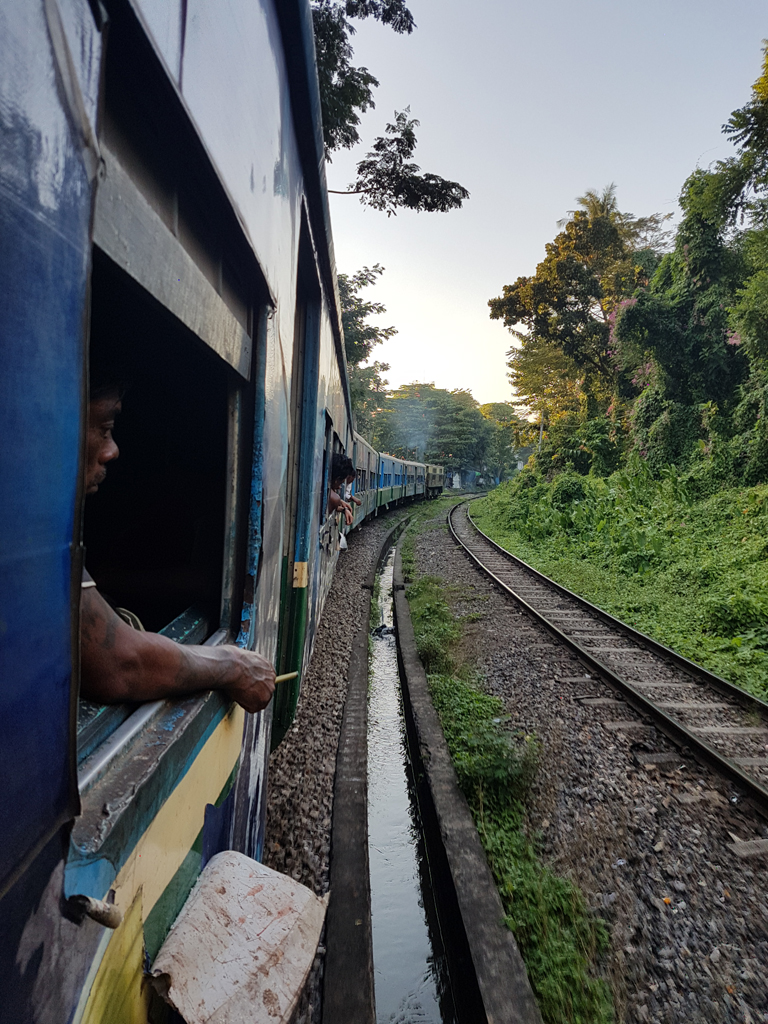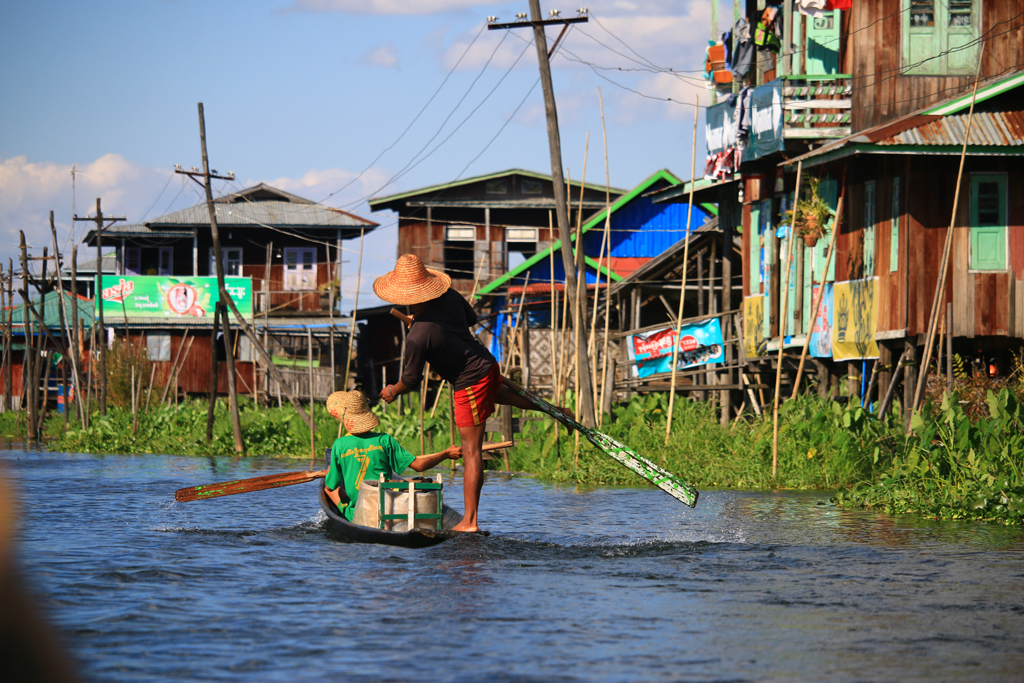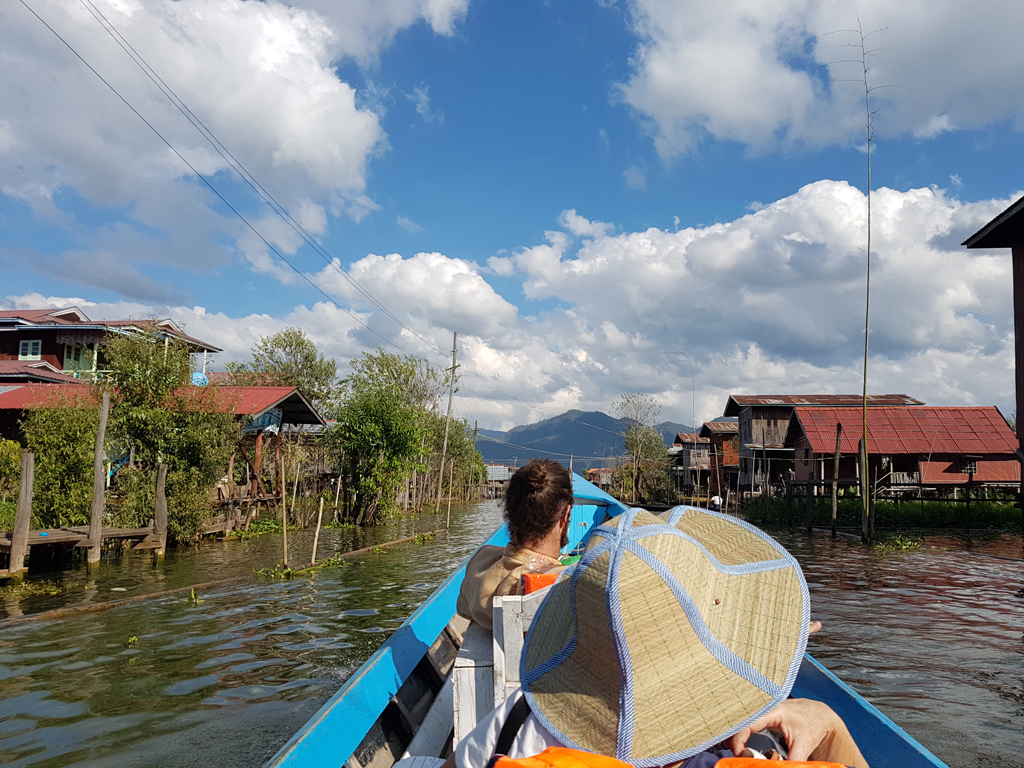After we’ve been astonished by the many gold of the Golden Rock we were the next day even more impressed as we visited the Shwedagon Pagoda in the former capital Yangon. They managed to sheet an incredible amount of 9.75 tons of gold in this monument. It shines over the 5-million cities with its many parks and lakes. But we could see how close wealth and poverty is after we took the train out of the city which passes the townships of Yangon. Buildings were constructed only a few meters to the train tracks. Everything happened close to the tracks: Children played, mother breastfed their babies, vendors sold their fruits and the people throw their trash there. What a crazy world! It was a weird and a depressing feeling for me.




We left Yangon the next day to drive towards the mainland. After a couple of hours on bumpy streets we took a left and found ourselves on a eight-lane-highway. Eight lanes on every side of the highway! The highway was busy as the highways in Europe during the final of the football world cup. Far away at the horizon we could see a motorcycle, two bicycles, one car and approx. ten people. Where the hell did we land here? It was Nay Pyi Taw. Since 2006 the new capital of Myanmar. The city was designed on a drawing board by the military. The moved overnight at the 2. November 2005 the whole government with 600 military trucks from Yangon to the new capital. The area of the city is eight times bigger than Berlin while only 1.1 million people are living there.


The landscape became more beautiful after we drove to the Inle Lake. The roads were empty and we passed two beautiful mountain ranges to reach one of the highlights of the country. The lake is located between the mountains and is famous for its inhabitants who live in stilt houses on the lake. They are basically using the lake like it would be normal land. There you can find houses, monasteries, swimming gardens. Some junction of the lake village could have been a flooded village on the landside. The exit of the toilet goes right into the water where they buried their deaths for a long time. But for sure they also use the lake water to wash themselves and their babies. It was very impressive to see all this. But we as the visitor are part of the development of the situation of the lake with its inhabitants. This place became a big tourist attraction. It was like a theater show and the inhabitants where the main actors. The fishermen posing with their net baskets for the pictures were the stars. The sensitive eco system of the lake is in danger by the hundreds of boats which bring the tourists to the place they want to see. Tourism became the main income source. Nowadays more than 7.000 people live on the lake. A few years ago they were only some hundreds. What did we do? It is the dark side of tourism. I am part of the problem and wish I would have a plan how to introduce a sustainable tourism here.








Schreibe den ersten Kommentar